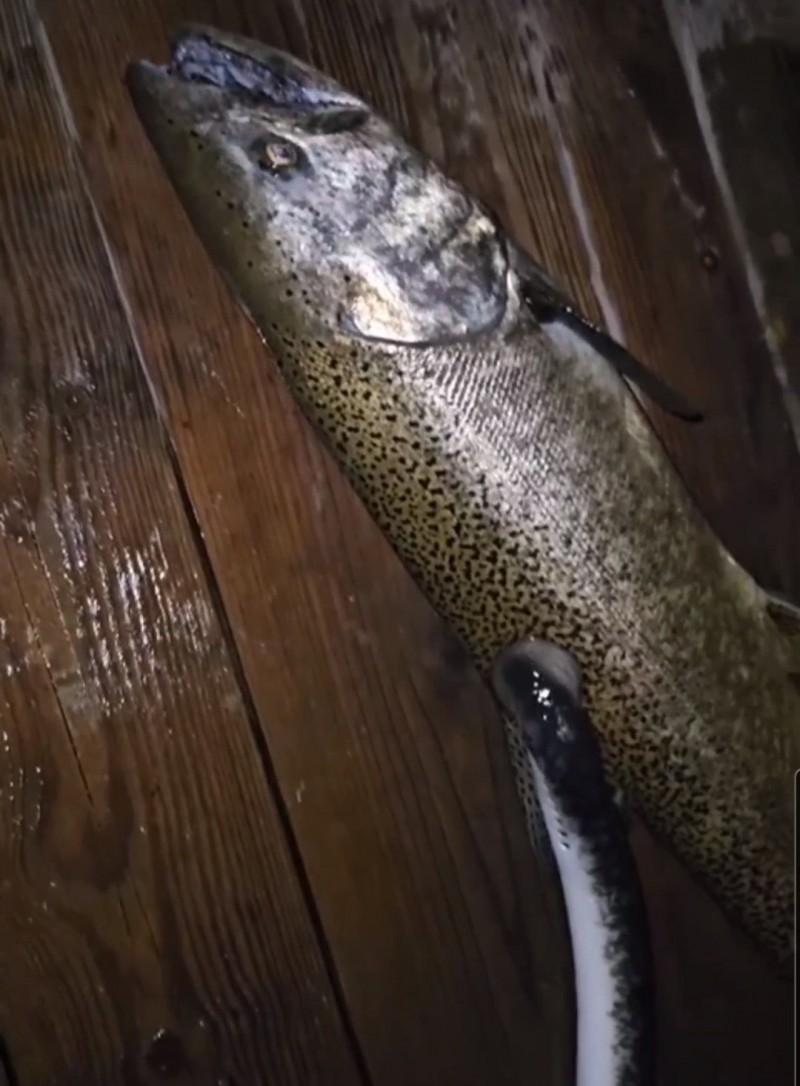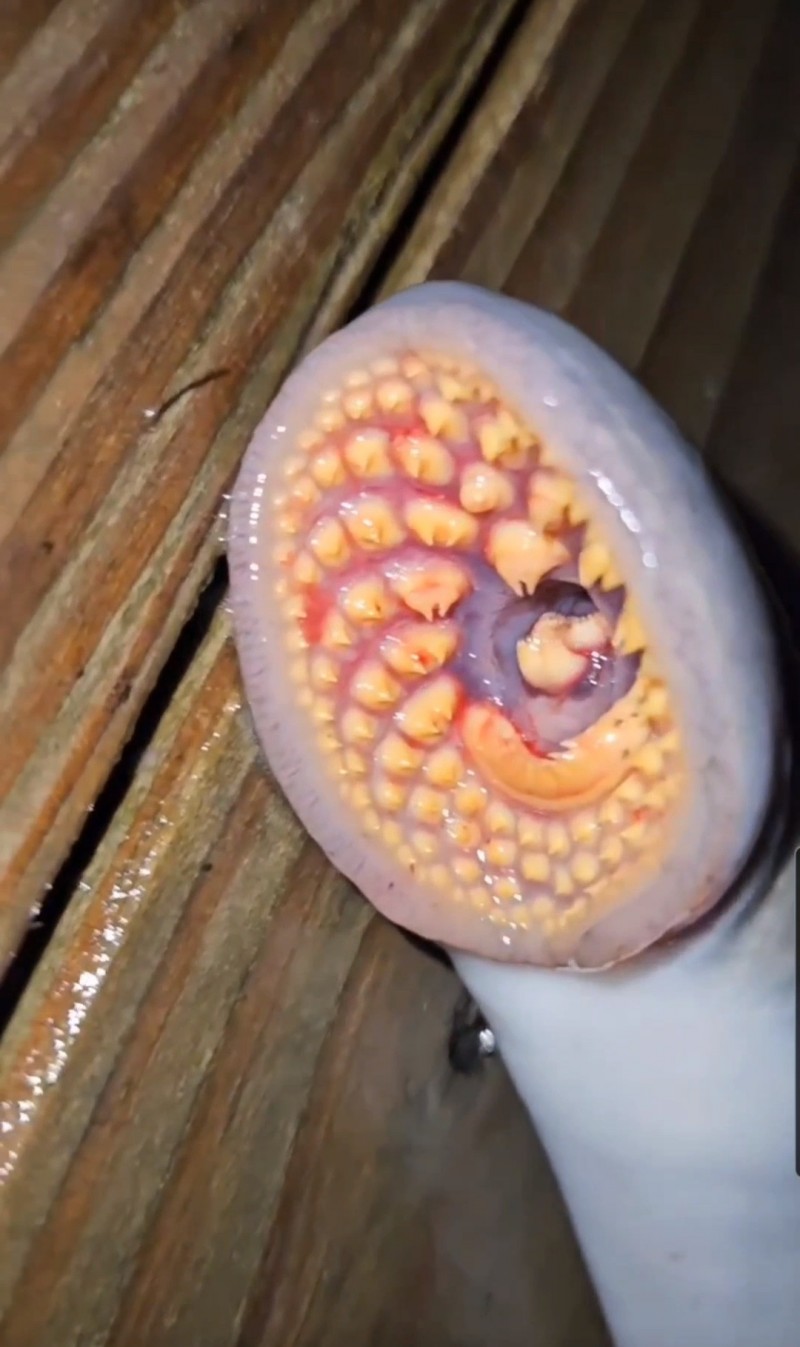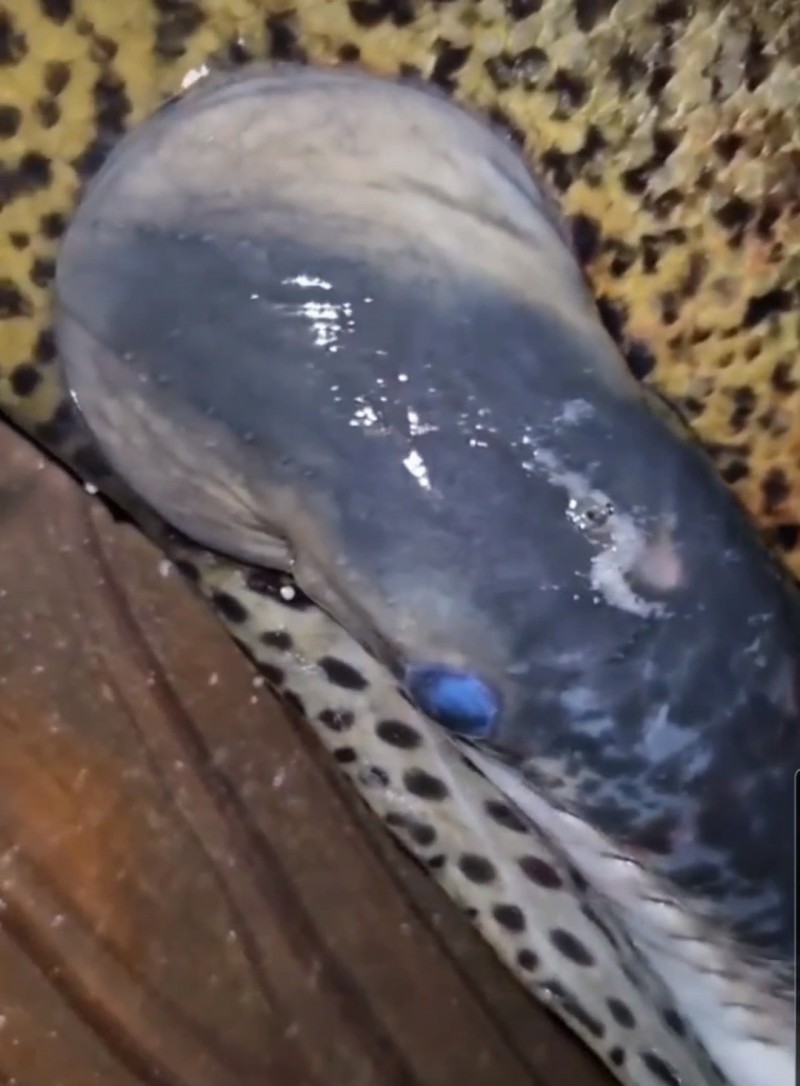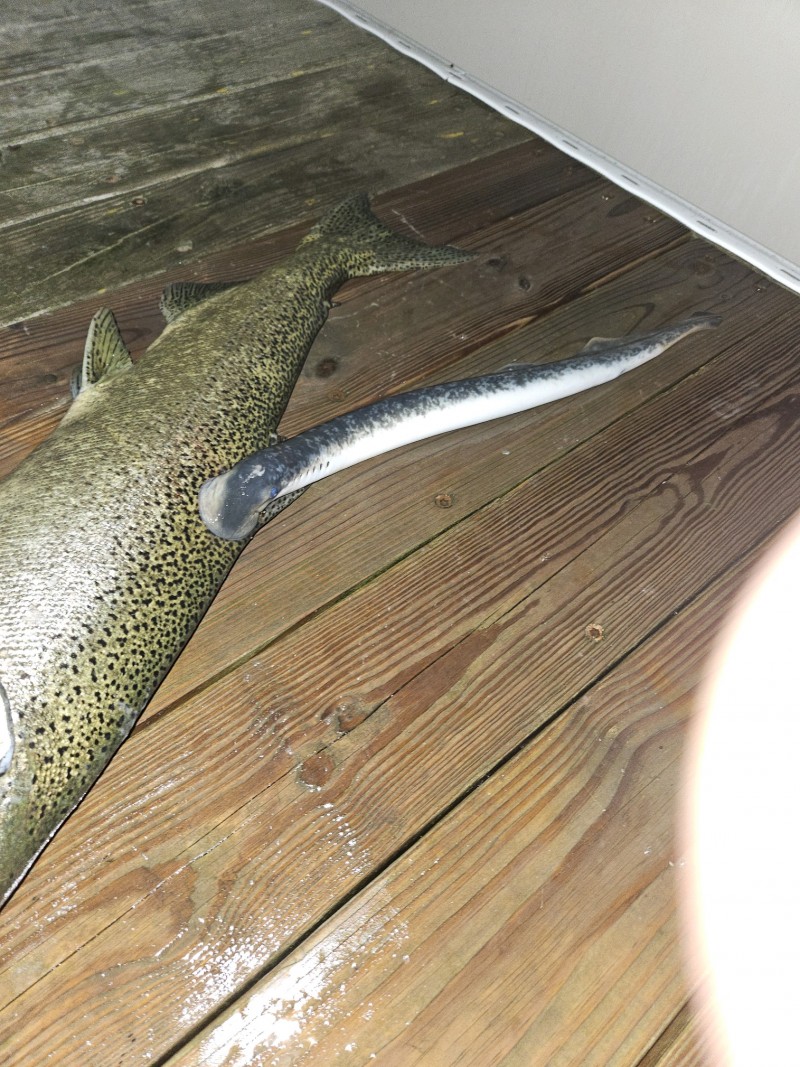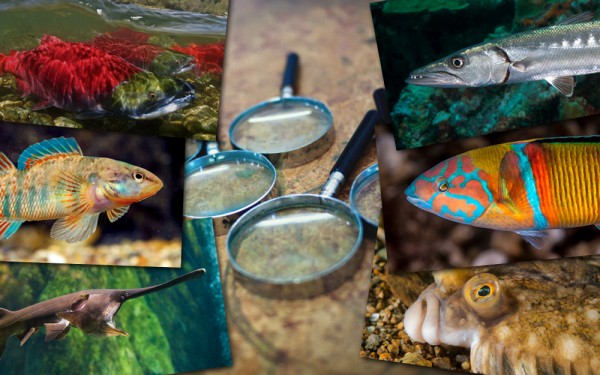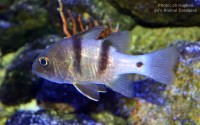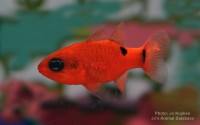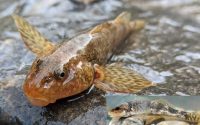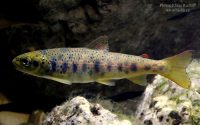Sea lamprey
(Petromyzon marinus)
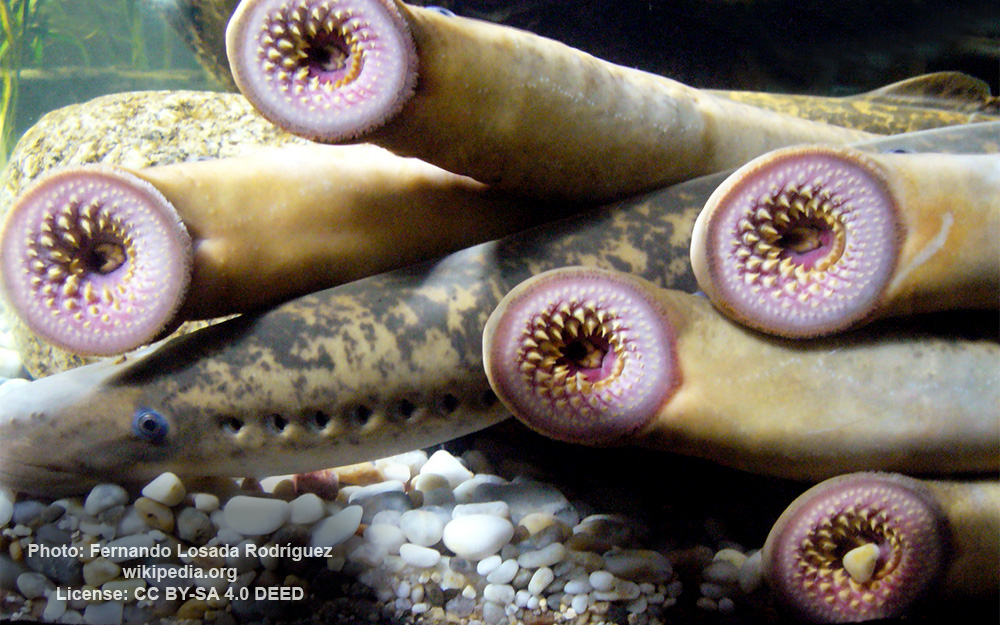
Image source: Fernando Losada Rodríguez | wikipedia.org
Classification
General data
The sea lamprey (Petromyzon marinus) is a parasitic lamprey native to the Northern Hemisphere. In its original habitats, the sea lamprey coevolved with its hosts, and those hosts evolved a measure of resistance to the sea lampreys.
It was likely introduced to the Great Lakes region through the Erie Canal in 1825 and the Welland Canal in 1919 where it has attacked native fish such as lake trout, lake whitefish, chub, and lake herring. Sea lampreys are considered a pest in the Great Lakes region as each individual has the potential of killing 40 pounds of fish through its 12–18 month feeding period.
The sea lamprey has an eel-like body without paired fins. Its mouth is jawless, round and sucker-like, and as wide or wider than the head; sharp teeth are arranged in many concentric circular rows around a sharp, rasp-like tongue. There are seven branchial or gill-like openings behind the eye. Sea lampreys are olive or brown-yellow on the dorsal and lateral part of the body, with some black marblings, with lighter coloration on the belly.
Within their seven-year lifespans, adults can reach a length of up to 120 cm (47 in) and a body weight up t 2.3 kg (5.1 lb)
The species is found in the northern and western Atlantic Ocean along the shores of Europe and North America, in the western Mediterranean Sea, the Black Sea, and as an invasive species in the Great Lakes.
They have been found at depths up to 4000 meters and can tolerate temperatures of 1–20 °C (34–68 °F).
In North America, they are native to the Connecticut River basin in the United States, and invasive to the inland Great Lakes and Lake Champlain in New York and Vermont. The largest European populations of sea lampreys are located throughout the southwestern areas of Europe (north-central Portugal, north-northwest of Spain, and west–southwest of France). These countries also support the main fisheries of the species.
